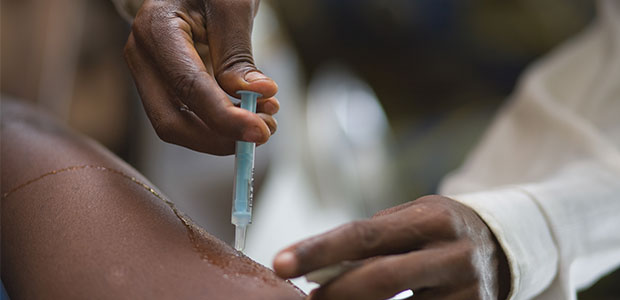
The WHO and FDA Approve Ebola Vaccine, Ervebo
A new, injectable vaccine has been approved to fight the deadly and highly contagious virus, Ebola. Health officials hope it can start to mitigate current and future outbreaks of the disease.
As of last month, the U.S. Food and Drug Administration (FDA) approved the very first vaccine for the Ebola virus disease. Manufactured by American pharmaceutical company, Merck, the vaccine is called Ervebo, and can be administered in just a single dose.
The announcement of the vaccine by the FDA came one month after the World Health Organization (WHO), the global health arm of the United Nations, approved the vaccine. It hopes that it will be a critical step in licensing and distributing the vaccine in countries most at risk of Ebola outbreaks.
“This is a historic step towards ensuring the people who most need it are able to access this life-saving vaccine,” said Dr. Tedros Adhanom Ghebreyesus, WHO Director-General. “Five years ago, we had no vaccine and no therapeutics for Ebola. With a prequalified vaccine and experimental therapeutics, Ebola is now preventable and treatable.”
The vaccine’s most immediate potential is, as Ghebreyesus said, in countries where Ebola outbreaks are frequent and dangerous. Ebola cases in the United States are very rare, and those that have occurred have been a result of people getting infected in other countries and then travelling to the Unites States, or health workers falling ill after treating Ebola patients.
The United States government will continue to help fight Ebola, especially in other countries, and especially in Africa. The current outbreak in the Democratic of the Congo is of peak concern.
Here is what the virus looks like and why its outbreak is highly alarming.
The Ebola virus is transmitted by bodily fluids, namely blood or secretions. It causes an often-fatal kind of hemorrhagic fever that causes bleeding inside and outside the body. It has an incubation period that ranges from 2 to 21 days. It’s highly deadly, and has a fatality rate of 50 to 90 percent.
Ebola is ravaging the Democratic Republic of the Congo. The outbreak is the 10th the African nation has seen since 1976, the year the scientists first identified the virus in a small town of Yambuku near the Ebola River. The outbreak in the Congo is the second-largest, second-deadliest Ebola outbreak on record.
Since Aug. 1 of 2018, over 3,354 people have reported symptoms of hemorrhagic fever in areas of the Congo, and 3,236 of those have tested positive for Ebola, according to Congolese health officials. So far, there have been 2,220 deaths—2,102 of which have been from confirmed cases of Ebola. The other deaths are considered probable cases. Still, thousands more are currently sick form the virus.
Ervebo has been circulating communities for a year or so now. Congolese health officials and the WHO began using Ervebo in 2018 as an experimental vaccine to help address the epidemic. Over 258,000 people have been vaccinated in the outbreak zone to date. A second experimental vaccine, produced by Johnson & Johnson, was recently deployed in the massive city of Goma, according to Congolese health officials.
While a vaccine does not cure the disease or ensure there will be no future cases, vaccines are essential to mitigating outbreaks and keeping diseases from spreading. Dr. Peter Marks, director of the FDA’s Center for Biologics Evaluation and Research, said the following:
“Ebola virus disease is a rare but severe and often deadly disease that knows no borders. Vaccination is essential to help prevent outbreaks and to stop the Ebola virus from spreading when outbreaks do occur.”
The presentation of a vaccine for Ebola is critical to addressing the worldwide threat of the disease. First the WHO approved it, then the FDA followed, and more countries are likely to follow in an effort to ensure that Ebola is not only preventable, but also treatable.